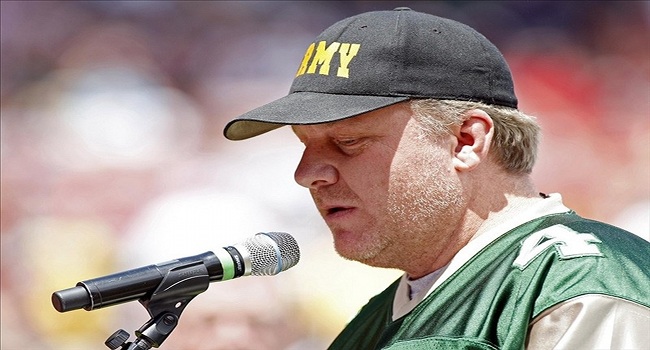Schilling To Sell Historic Bloodied Sock to Escape Financial Collapse
Is it wrong for one man to want another man’s dirty sock? Supposedly not, if you’re a Curt Schilling fan.
According to FoxSports.com, the former Boston Red Sox pitcher and future Hall-of-Famer may need to sell his blood-stained stock he wore in the pivotal 2004 World Series Championship to pay off a few loans he made on a failed video game company.
Schilling made a rather unwise bet on his Providence-based 38 Studios video game company, which filed for bankruptcy in late June. Fortunately, Schilling listed his sock as collateral for the investment (if you can believe it). The sock is currently shelved in the National Baseball Hall of Fame and Museum in Cooperstown, N.Y to appease all those Red Sox fans.
Weird? I never thought I’d be celebrating a sock before, not one that’s bloodied and used anyway.
Schillings’ collateral didn’t stop there. The 45-year-old ball player-turned-broadcaster is also selling a hat previously worn by New York Yankees slugger Lou Gehrig, a variety of World War II memorabilia he had collected over his years in the MLB and his 20-room, 26-acre Medfield, Mass. house (estimated $3.43 million).
Schilling went on WEEI-AM in Boston to discuss his recent financial downturn, expressing he had to “pay for his mistakes.â€Â He continued by saying “I am obligated to try and make amends and, unfortunately, this is one of the byproducts of that.â€
Ironically, this news comes to light in the week ESPN broadcasted “Broke,†the 30 for 30 series chronicling the lives of former big-wig ball players and their fall from financial grace. The hour-and-a-half special highlighted the small epidemic of players who spend themselves out of money and pay for it in the end.  I guess it was a little too late for Schilling.
Richie Russek, a Westhampton, N.Y.-based auctioneer, estimated the sock could be worth around $100,000. Did you just say $100,000? That’s a lot of green for something so bloodied and used up. The firm, however, still owes an estimated $150.7 million, of which Schilling pumped in $50 million of his own money, according to court findings.
Schilling did confirm with the media that he was “absolutely†a part of the company’s downfall. He did, however, express that Gov. Lincoln Chafee (loan overseer) had an agenda against Schilling’s company, which inevitably led to its collapse.



